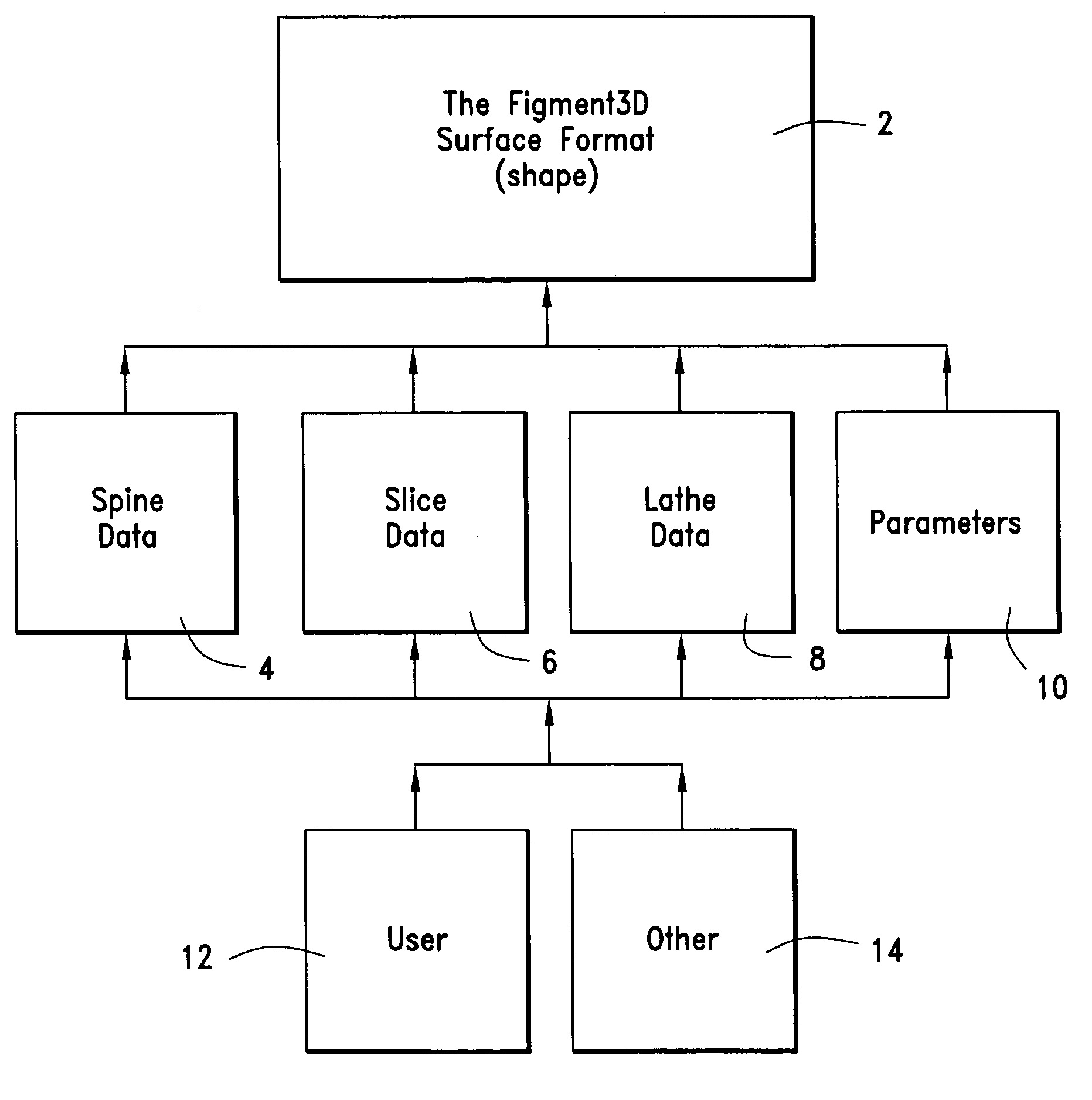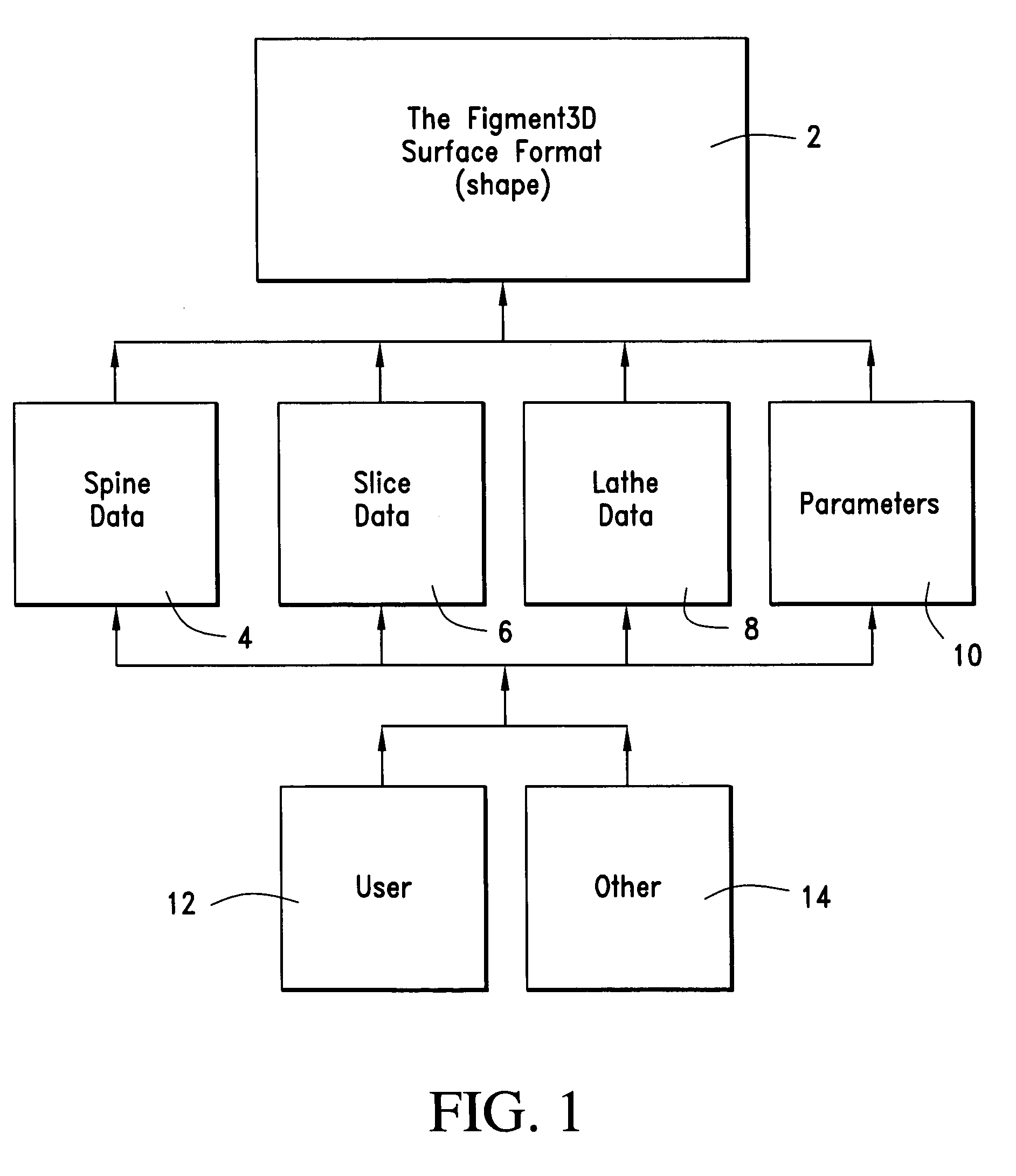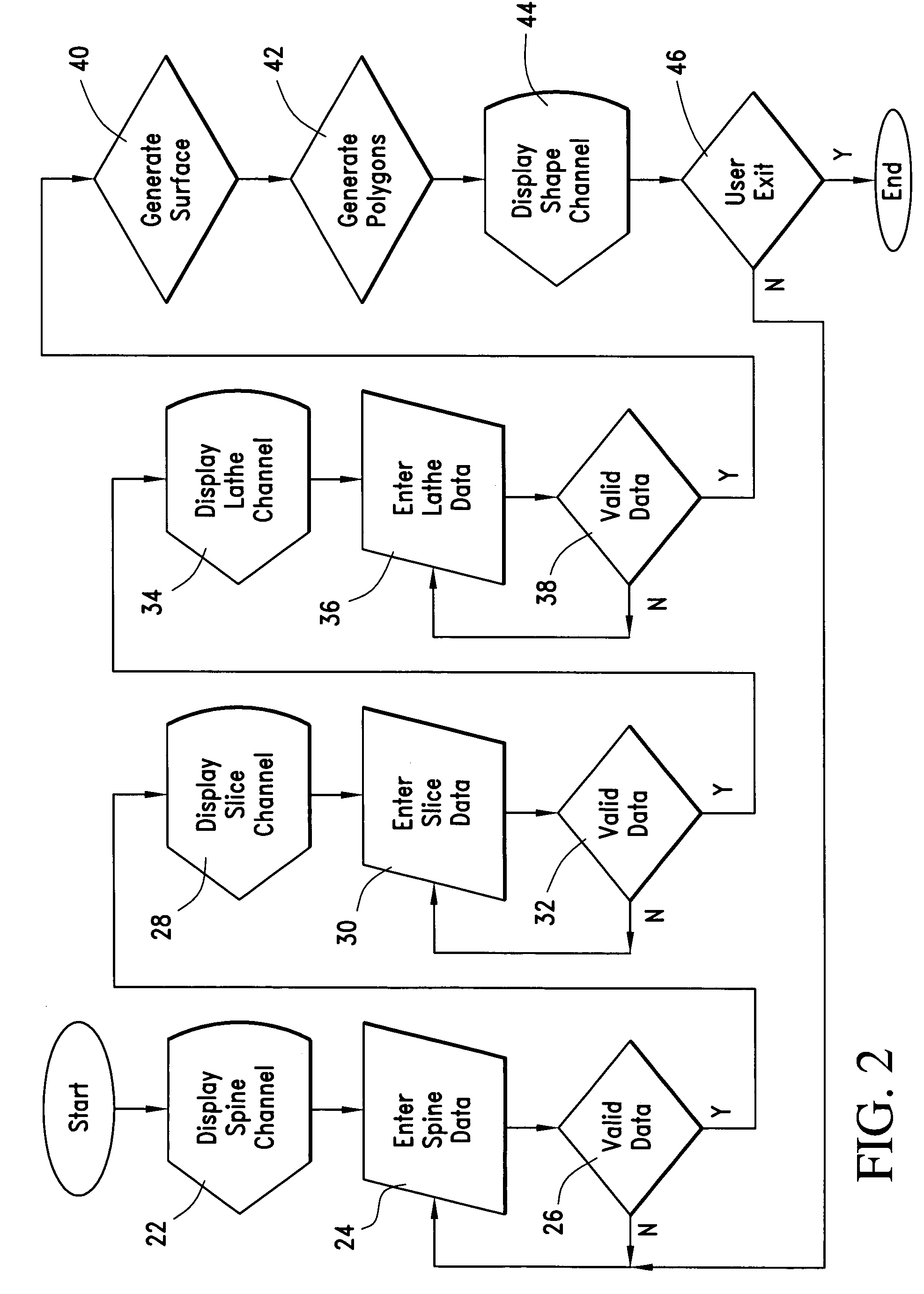Apparatus and method for generating 3D images
a technology applied in the field of approximation and image generation, can solve the problems of not being able to undo or reverse operations, bending the tube within the framework of tools, and often no editing features, etc., and achieves the effect of fast approximation method and precise evaluation
- Summary
- Abstract
- Description
- Claims
- Application Information
AI Technical Summary
Benefits of technology
Problems solved by technology
Method used
Image
Examples
Embodiment Construction
[0043]A working prototype of this invention is currently in use by The Figment3D Rendering System, a Windows PC application featuring an Editor and Player, the latest version of which is approximately 460 pages of source code (included), written in C / C++ using OpenGL to render polygons.
[0044]This invention is represented as C / C++ source code, which is compiled for Windows NT / 2000 using Microsoft Visual C++ 6.0 Developer Studio, and OpenGL version 1.1 libraries which are included as standard with the operating system. This invention is compiled into an executable file (.EXE), a complete application. Using a computer that has the microprocessor based on the Intel Pentium PC or the Athalon PC a user can use the application by “running” or opening the Figment3D.EXE file. The application allows a user with minimal training to create and modify shapes by drawing or selecting primitives, each of which is represented as a single surface. The user can save one or more shape files to diskette...
PUM
 Login to View More
Login to View More Abstract
Description
Claims
Application Information
 Login to View More
Login to View More - R&D
- Intellectual Property
- Life Sciences
- Materials
- Tech Scout
- Unparalleled Data Quality
- Higher Quality Content
- 60% Fewer Hallucinations
Browse by: Latest US Patents, China's latest patents, Technical Efficacy Thesaurus, Application Domain, Technology Topic, Popular Technical Reports.
© 2025 PatSnap. All rights reserved.Legal|Privacy policy|Modern Slavery Act Transparency Statement|Sitemap|About US| Contact US: help@patsnap.com



